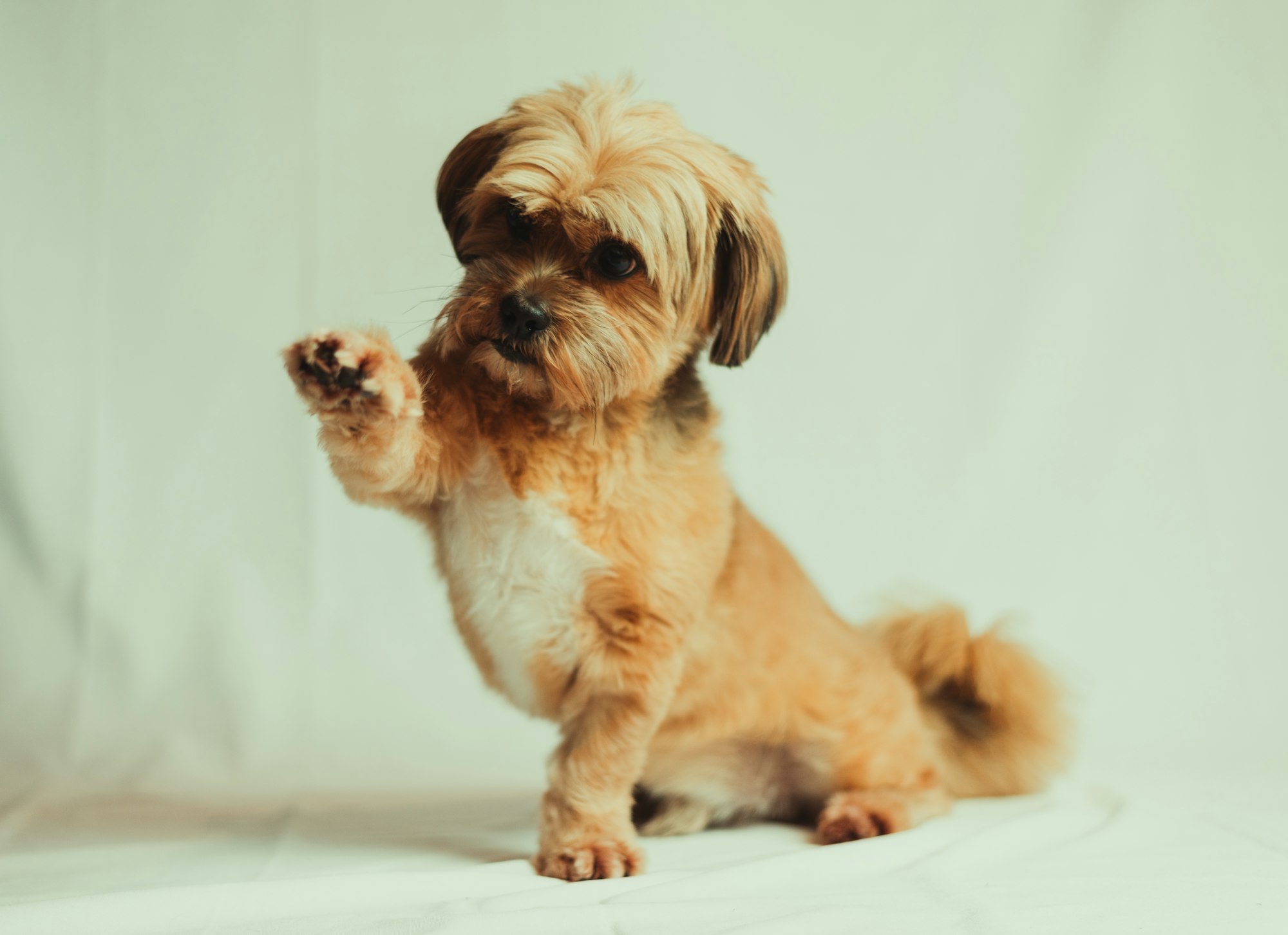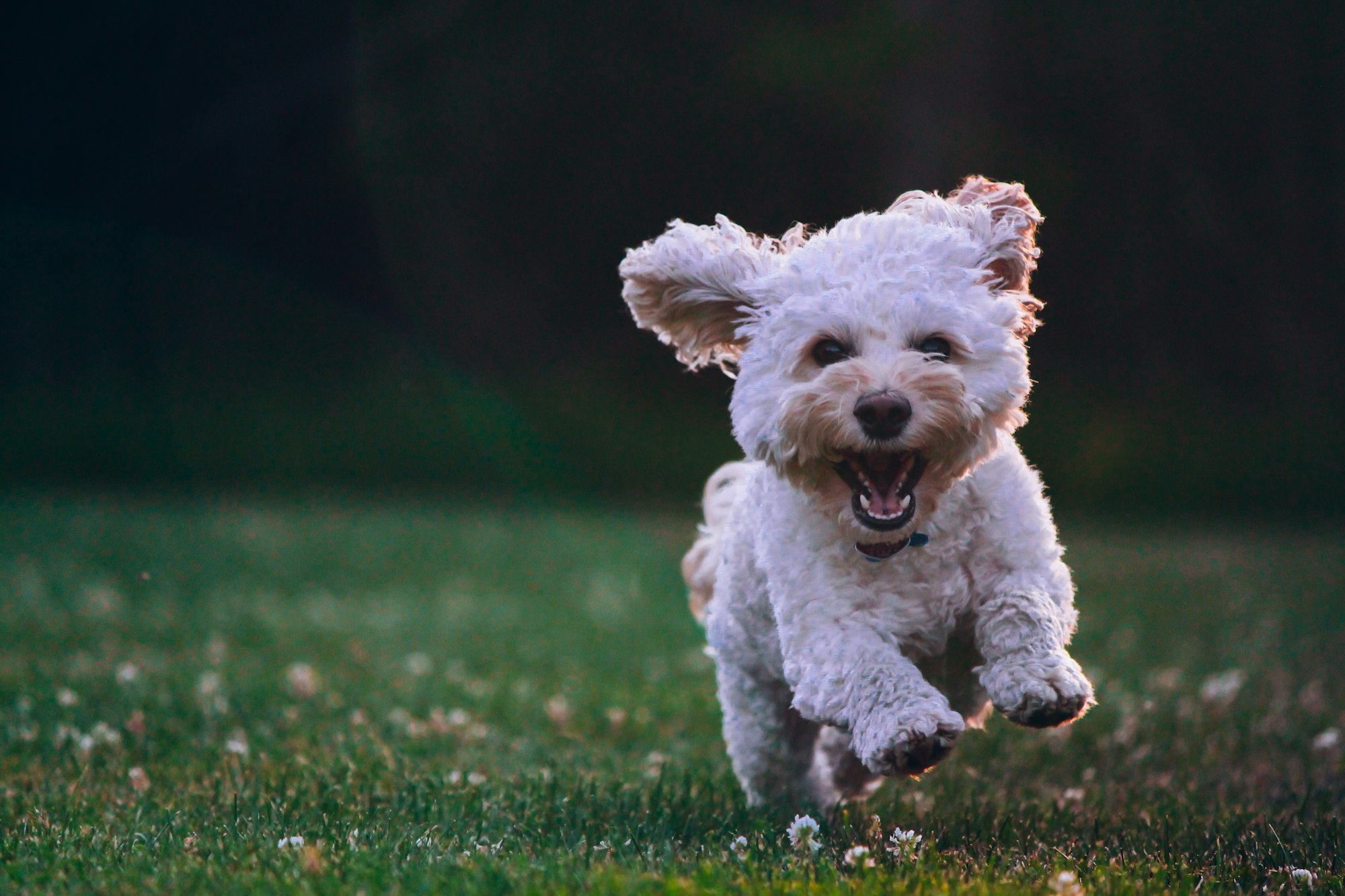Puppies, with their boundless energy and playful spirits, bring joy and excitement into our lives. As puppy parents, it's crucial to ensure that these adorable bundles of fur get the right amount of exercise for their overall well-being. Let's dive into the world of puppy exercise and explore the dos and don'ts to keep your furry friend happy and healthy.

Introduction
Welcoming a puppy into your home is an exhilarating experience, but it comes with responsibilities. One of the key factors in ensuring a puppy's health is providing adequate exercise. Whether you have a tiny Chihuahua or a robust Labrador, understanding their exercise needs is vital.
The Developmental Stage of Puppies
Alright, let's dive into the fascinating world of puppy growth! Puppies, much like little humans, go through different developmental stages, and understanding these phases is key to providing the right amount of exercise.
Puppy Growth 101
In the early weeks, puppies are like tiny, furry sponges, soaking up the world around them. Their bones are developing, and their muscles are growing stronger. This is the time when gentle activities like short walks and playtime in a controlled environment lay the foundation for a healthy pup.

Teenage Pups
As they hit their adolescent phase, puppies experience a burst of energy that might leave you wondering if they've transformed into miniature tornadoes. During this stage, a bit more exercise is beneficial. Longer walks, interactive games, and a bit of agility training can help them burn off that excess steam and keep their minds engaged.
Building a Solid Foundation
Remember, the early stages are all about building a solid foundation for a healthy, active life. Too much exercise too soon can put unnecessary stress on their developing bodies, so it's crucial to strike the right balance.
Daily Exercise Requirements for Puppies
Now that we've got the developmental stages covered, let's talk about the daily exercise needs of our furry companions. Just like us, puppies need a healthy mix of activity, play, and rest to thrive.
Tailoring Exercise to Size and Breed
One size definitely doesn't fit all when it comes to puppy exercise. Small breeds may be content with shorter bursts of play, while larger breeds might need longer walks and more vigorous activities. Knowing your puppy's breed characteristics is like having the secret code to their happiness.
Playtime vs. Walks
It's not just about walks around the block. Playtime is equally crucial. Tossing a ball, playing tug-of-war, or even a game of hide-and-seek in the backyard can all contribute to a well-rounded exercise routine. Variety is the spice of a puppy's life!
Balancing Act
And here's the secret sauce: balance. Too much exercise without enough rest can lead to a tired and cranky pup. On the flip side, too little exercise can result in a restless ball of energy tearing through your living room. Finding that sweet spot is like hitting the puppy jackpot.
Benefits of Regular Exercise
Now, let's talk about why all this effort is worth it. Regular exercise isn't just a way to tire out your pup; it's a crucial ingredient in the recipe for a happy and healthy life.
Physical Health Boost
First and foremost, exercise keeps those puppy muscles and joints in top-notch condition. It's like giving them a VIP pass to a lifetime of agility and strength. Plus, it helps manage weight, reducing the risk of those extra puppy pounds sneaking up.
Mental Stimulation
A bored puppy is a mischievous puppy, right? Regular exercise isn't just about the body; it's a workout for the mind too. It prevents boredom, reduces destructive behavior, and sets the stage for a well-behaved adult dog.
Better Behavior, Better Bond
Here's the magic of it all – a well-exercised pup is a joy to be around. They're more likely to listen, learn, and become your partner in crime (the good kind, of course). The bond you build during those play sessions and walks is the secret sauce to a lifelong friendship.
Common Mistakes in Puppy Exercise
Ah, puppy parenting – it's a journey filled with joy, but it's not without its pitfalls, especially when it comes to getting the exercise balance just right. Let's explore some common slip-ups and how to avoid them.

Overenthusiastic Playdates
It's tempting to let your pup romp around with every dog in the neighborhood, but overenthusiastic playdates can lead to exhaustion and potential injuries. Moderation is the name of the game; ensure play sessions are fun but not overly taxing.
Ignoring Individual Needs
Not all puppies are created equal. Each has its own energy level and preferences. Ignoring these individual needs can result in either an under-exercised or overtired furball. Pay attention to your pup's cues – they're experts at telling you when they've had enough.
Monotony in Activities
Imagine doing the same workout every day – pretty dull, right? Puppies feel the same way. Monotony in activities can lead to boredom and may even discourage them from exercising. Mix it up with different games, puzzle toys, and environments to keep things exciting.
How to Tailor Exercise for Different Breeds
Alright, let's play the matchmaker game for a moment. Matching your puppy's exercise routine to their breed is like finding the perfect dance partner – it just clicks. Let's break it down.
High-Energy Breeds
For those lucky folks with a Border Collie, Husky, or other high-energy breed, get ready for action! These pups thrive on intense activities like agility training, fetch marathons, and even a jog around the block. Keep them mentally stimulated, and you've got a happy camper.
Low-Energy Breeds
Now, if you've got a Bulldog or a Pug, welcome to the laid-back club. Shorter, more leisurely walks and engaging playtime are the name of the game. Be mindful of their shorter snouts – they're not built for long-distance sprints.
Tailoring for Size
Size matters, even in the doggy exercise world. Smaller breeds may prefer shorter bursts of energy, while larger breeds may need a bit more leg-stretching time. Adjust the intensity to match their size, and you're on the right track.
Creative Indoor Exercises
Rainy day got your pup feeling blue? No worries – let's explore some creative indoor exercises to keep their tails wagging, even when the weather isn't cooperating.
Treasure Hunt
Create a mini treasure hunt using their favorite interactive dog toys or treats. Hide them around the house and let your pup's nose lead the way. It's a mental workout and a fun indoor activity rolled into one.
Obstacle Course
Transform your living room into an obstacle course using pillows, cushions, and maybe even some empty cardboard boxes. Guide your pup through the course, rewarding them with treats for a job well done.
Tug-of-War
A classic indoor game that never gets old. Grab a sturdy rope toy and engage in a friendly game of tug-of-war. It's an excellent way to burn off energy and strengthen the bond between you and your furry friend.
Socialization Through Exercise
Let's talk about the social butterfly in your fur family – your puppy! Socialization isn't just about polite greetings; it's about building a confident, well-adjusted adult dog. And guess what? Exercise is the perfect socialization playground.
Puppy Playdates
Just like humans, puppies need buddies. Organize playdates with other vaccinated and friendly dogs. It's like a canine social club where they learn vital social cues, proper play behavior, and maybe a few party tricks.
Off-Leash Adventures
Allowing your pup off the leash in safe, designated areas gives them the freedom to interact and play with other happy dogs. It's a crash course in doggy etiquette, helping them understand the subtle art of canine communication.
Doggy Daycares
Consider enrolling your pup in a reputable doggy daycare. It's a supervised environment where they can mingle with their furry peers, under the watchful eye of experienced caregivers. Plus, it's a win-win – exercise and socialization in one go!
Signs of Overexertion and Fatigue
Imagine running a marathon without training – it's a recipe for exhaustion and discomfort. Dogs, in their enthusiasm, might not recognize their limits. Here's how to spot signs of overexertion and fatigue in your energetic friend.
Excessive Panting
While it's normal for dogs to pant during exercise, excessive panting, especially when at rest, might indicate they've pushed themselves too hard. It's their way of saying, "I need a breather, please!"
Slowed Movements
If your pup starts moving in slow motion or seems uninterested in play, it's a red flag. Fatigue can manifest as lethargy, and it's crucial to respect their need for rest.

Reluctance to Continue
You know your pup's usual excitement about walks or playtime. If they suddenly show reluctance or disinterest, it's a clear signal they've reached their energy limit. Time for a puppy pit stop!
Creating a Consistent Exercise Routine
Consistency is the magic wand in the world of puppy exercise. A routine isn't just about keeping them fit; it's about creating a sense of security and predictability. Let's craft a plan that works for both of you.
Set a Schedule
Puppies thrive on routine, so set a consistent daily schedule for exercise. Whether it's a morning jog, an afternoon play session, or an evening stroll, stick to a routine that fits your lifestyle and your pup's energy levels.
Mix It Up
Just like us, dogs appreciate variety. Don't stick to the same old routine every day. Mix up the activities – walks, games, and maybe even a surprise adventure to keep things interesting.
Adapt as They Grow
Puppies grow faster than we can imagine. As they transition from adorable fluffballs to energetic adolescents, adapt the exercise routine to match their changing needs. What worked at three months may need tweaking at six.
The Role of Nutrition in Supporting Exercise
Let's dive into the kitchen and talk about the fuel that powers those adorable puppy zoomies – nutrition! Just like us, what your puppy eats plays a massive role in supporting their energy levels and overall health.
Balanced Diet Basics
Imagine trying to run a marathon on an empty stomach – not a pleasant thought, right? Ensure your puppy's diet is well-balanced, with the right mix of proteins, carbohydrates, fats, vitamins, and minerals. It's like giving them a customized menu for a lifetime of vitality.
Adequate Hydration
Exercise and playtime can turn even the most chilled pup into a little sweatball. Always make sure they have access to fresh water, especially during and after activities. Hydration is the unsung hero of a healthy, active lifestyle.
Treats with Purpose
Who doesn't love treating their pup? But let's make those treats work for you. Use them as rewards during training or as a post-exercise snack. Opt for healthy treats that complement their regular diet – it's like a tasty bonus for being a good sport.
Training While Exercising
Time to multitask – let's combine exercise and puppy training for maximum efficiency and fun! It's not just about burning energy; it's about turning every activity into a learning opportunity.
Integrating Commands
Whether you're on a walk, playing fetch, or doing agility exercises, integrate basic commands like sit, stay, and come. It's like sneaking in a bit of education during playtime – and who said learning can't be fun?
Positive Reinforcement
Puppies are like sponges, soaking up information and cues from their environment. Use positive reinforcement – treats, praise, or a good belly rub – to reinforce good behavior during exercise. It's the secret sauce to a well-behaved and happy pup.
Consistency is Key
Consistency isn't just crucial in exercise routines; it applies to training too. Use the same commands consistently, and reward good behavior every time. It creates a routine your pup understands and makes training sessions more effective.
Transitioning Exercise Routines as Puppies Age
Time flies, and so does your puppy's growth. As they transform from tiny fluff to a full-fledged dog, let's talk about gracefully transitioning their exercise routines.

Adolescence Adjustments
Just like teenagers, adolescent puppies can experience a surge of energy. Adjust the intensity and duration of their exercises to match their growing bodies. Think of it as adapting the workout routine for the teenage growth spurt.
Watch for Physical Changes
Keep an eye on your pup's physical development. If they start to pack on the pounds or show signs of joint issues, it might be time to tweak the exercise routine. Consulting your vet for guidance is always a smart move.
Senior Pup Considerations
As your puppy enters their senior years, their exercise needs will change. Gentle walks, low-impact activities, and more rest become priorities. It's a natural transition, and adjusting their routine ensures they stay active while considering the changes in their body.
Consulting a Veterinarian
When in doubt, don't Dr. Google it – consult the real experts. Your veterinarian is your pup's healthcare superhero, and involving them in the exercise equation is a wise move.
Regular Check-Ups
Just like humans, puppies need regular check-ups. Your vet can assess their overall health, including weight, joints, and any specific considerations related to their breed.
Tailored Exercise Advice
Veterinarians aren't just for emergencies; they're a goldmine of advice on your pup's well-being. Discuss your puppy's exercise routine during check-ups and get tailored advice based on their unique needs.
Health Assessments
If you notice any changes in your pup's behavior, energy levels, or physical condition, it's vet time. Early detection of potential health issues can make a significant difference in their overall well-being.
Conclusion
In conclusion, understanding how much exercise a puppy needs is vital for their physical and mental well-being. A well-exercised puppy is not only healthier but also happier and better behaved. Tailoring your approach to your puppy's breed, size, and individual needs ensures a lifetime of benefits.
Frequently Asked Questions (FAQs)
- How do I know if my puppy is getting enough exercise?
- Look for signs of contentment, balanced behavior, and physical health. If in doubt, consult your veterinarian.
- Can indoor activities replace outdoor exercise for my puppy?
- While indoor activities are beneficial, outdoor exercise provides essential exposure to new environments and smells.
- Should I adjust my puppy's exercise routine as they get older?
- Yes, adapt the routine to accommodate their changing energy levels and growth stages.
- What role does playtime with other dogs play in my puppy's development?
- Socialization with other dogs is crucial for developing good behavior and preventing behavioral issues.
- How can I prevent overexertion in my puppy during playtime?
- Watch for signs of fatigue, offer water regularly, and provide a mix of activities to prevent monotony.




